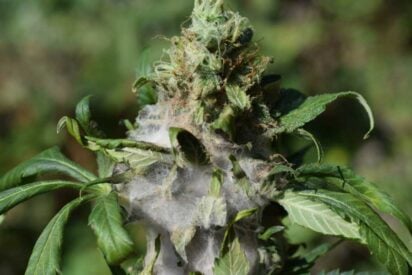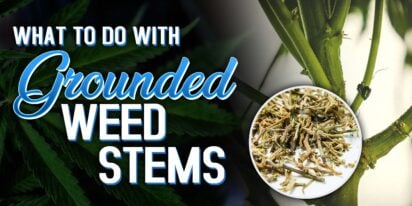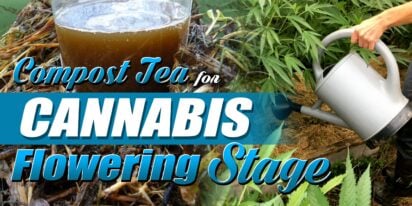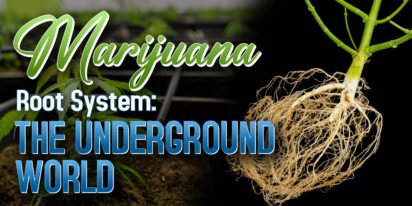
Are You 18 Or Over?
YesOr
No By clicking yes, you certify that you are over 18. By using this website, you agree to our legal disclaimer.605+ Cannabis Strains over 20 Breeders worldwide.
Table of Contents

Like any other agricultural product, growing cannabis also involve common problems that every grower should be aware of. Yes, cannabis growers, most especially first-timers, face difficulties growing marijuana because of nutrient issues, overwatering or underwatering, pests, and other issues.
It’s a good thing that marijuana plants are resilient, with innate capability to withstand harsh environments or invaders. When you’re faced with common cannabis plant problems, don’t panic. Assess the signs and make an analysis of what’s happening to your marijuana plants so you can take the appropriate course of actions. Let’s learn the most common marijuana plant problems now!
Overwatering and underwatering are commonly experienced by novice cannabis growers. Watering issues may cause multiple symptoms. They can even cause stunted growth. The contributing factors to successful cannabis grow include adequate lighting, airflow, nutrients, and humidity. However, water is one of the crucial aspects to keep your marijuana plants happy, healthy, and strong.
Let’s check the signs of overwatering and underwatering so you’ll know when to act accordingly.
You might be worrying that your marijuana plants need a constant supply of water. However, it’s a pitfall that most novice usually falls into. Marijuana plants use their roots to breath air aside from uptaking water. So if the root system of your cannabis plants is constantly getting swamped, they’ll likely drown.
As the opposite of overwatering, underwatering occurs when you simply are unable to meet your cannabis plant’s demands. If your plants don’t get adequate water, their root system will start to dry up, leading to stunted growth and reduced yield.
Novice growers usually encounter nutrient burn in growing cannabis plants. It is often a result of overzealous feeding of marijuana plants. It usually occurs when there’s a too much hydroponic solution that is applied, wherein the roots take more nutrients than what the cannabis plant can use. Nutrient burn also happens when the plants are cultivated in fresh compost manure as well as other plant mediums with too high nutrient levels. Remember that cannabis plants don’t really need plenty of nutrients in all stages of development. Nutrient burn is caused by feeding cannabis plants with a too strong nutrient mix or fertilizing too frequently.
Nitrogen toxicity may result in feeding your cannabis plants too much nitrogen. Nitrogen is a macronutrient that marijuana plants use to grow and survive. Most nutrient bottles have three numbers that are listed next to each other, like N-P-K ratios. They symbolize the three main macronutrients including Nitrogen, Phosphorus, and Potassium.
White powdery mildew is usually a result of too high humidity in the grow room, accompanied with low or absence of airflow. It is one of the common fungi infestations you’ll encounter as a marijuana grower. In the long run, the powdery substance continues to spread to the other parts of the plants and produce more mildew like eating up your marijuana plants.
Bud rot is caused by levels of high humidity accompanied by low airflow. It can also be caused by overwatering, which results in rotting of cannabis buds. The rotting starts from the inside, slowly turning brown and moldy.
Sciarid flies or fungus gnats are small flying insects with a 3 and 5mm size. These are small and dark-colored flies that usually appear and spread on the lower parts of cannabis plants. It also happens in the substrate. Fungus gnats feed on sugars, decomposing organic material, and molasses. High humidity and low light intensity make your cannabis plants susceptible to fungus gnats. Warm temperatures also predispose your plants to this condition.
Fungus gnats are common guests in indoor crops and greenhouses. Hydroponic systems are highly sensitive to sciarid flies. Organic substrates with excessive moisture make an excellent habitat for fungus gnats.
Female sciarid flies lay around 50 to 200 eggs in the substrate and hatch after 48 to 72 hours in favorable conditions. For the next 2 to 3 weeks, there are four different stages of development that larvae pass through. The propagation is fast enough, which highly depends on the environmental conditions.
Heat stress also occurs when a cannabis plant is placed too close or directly to the heat lamp. Heat stress also refers to a form of stress on cannabis plants as a result of too high temperature in your grow room. The ideal temperature in the grow room should be close o 75 degrees Fahrenheit at all time. However, it reaches below 80 degrees Fahrenheit, the cannabis plant starts to slow down.
Fusarium is a genus of filamentous fungi living in the soil and may affect your cannabis plants. Most species are considered saprophytes, feeding on the debris of other soil organisms. Fusarium eventually develops as parasites, producing mycotoxins that can also affect humans causing skin infections. The colonization of fusarium takes place at the level of the soil, through the shallow roots or the stem, which moves all parts of the cannabis plant via the vascular bundles.
Aphids affect marijuana growers around the world. Aphids are a common garden pest with detrimental effects on cannabis plants. They are small sap-sucking insects which are destructive on cultivated plants. Aphids vary in size from 1 to 10 mm. It can be green, white, red, or black in color with two whip-like antennae and tube-like structures referred to as cornicles.
In early spring, winged female aphids hatch, giving birth to female nymphs. Only within a few weeks, young aphids are born. The number of aphids rises dramatically in a relatively short period of time. Aphids develop as males and females, mating to produce overwintering eggs by the end of summer.
Growing cannabis plants with the wrong pH level is a common reason why people experience cannabis plant issues. To prevent health problems, mix nutrients and water at the right pH. Remember that the pH level affects the absorption of nutrients by your cannabis plants. Invest in a reliable pH meter to ensure the water and soil has a neutral pH which is 7.
Growing cannabis is a tricky process, and there are so many things that can go wrong. Too little or too much water, heat, or fertilizer, mildew, mites, viruses, mold, issues with ozone exposure, fluctuations in pH, and nutrient deficiencies can jeopardize your yield and the quality of the final product. Keep these quick fixes in mind and research intensively if ever you encounter any of these common marijuana plant problems.

[ez-toc] In indoor gardening, maintaining an optimal temperature within your grow tent is crucial for the health and productivity of your plant

[ez-toc] Welcome to the delightful world of cannafudge crafting, where sweetness meets sophistication, and cannabis infusion adds a unique twis

[ez-toc] You’ve finished trimming your weed, but what about those leftover stems? Don’t throw them away! These seemingly useless bits can a

Feeling high can be an exhilarating experience, but it's essential to make the most of it by engaging in activities that enhance the sensation a

[ez-toc] Starting with planting cannabis seeds might seem simple, but how deep should cannabis seeds be planted for them to grow well. In this

[ez-toc] In the realm of cultivating cannabis, maximizing growth during the flowering stage is a top priority for growers. While various method

[ez-toc] Nutrient burn is a common issue among plant enthusiasts, often resulting from over-fertilization or improper nutrient application. It

[ez-toc] Welcome to our complete guide to dealing with harmful pathogenic mold in cannabis. For those who grow cannabis, preventing mold is vit

In recent years, there has been speculation about “did Shakespeare smoke weed?” This idea originates from a study by South African anthropol

[ez-toc] Welcome to the hidden world beneath the soil – the inside of the marijuana root system. While the vibrant leaves and resinous flower

Are You 18 Or Over?
YesOr
No By clicking yes, you certify that you are over 18. By using this website, you agree to our legal disclaimer.